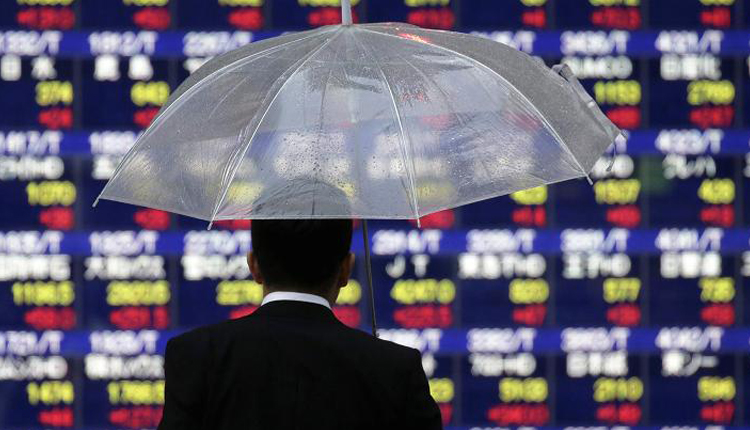Asian markets slipped on Thursday after the Federal Reserve raised interest rates, a widely expected move, and indicated two more rate hikes were likely in 2018.
The Nikkei 225 slipped 0.53 percent, paring steeper losses seen earlier in the session. Mining stocks fell 1.79 percent as most other sectors declined, although banks and shippers clung to gains.
In Seoul, the Kospi fell 1.59 percent, lagging other major markets in the region. Automakers were also lower, with Hyundai Motor falling 2.85 percent.Technology stocks were a mixed picture, with Samsung Electronics dropping 1.92 percent and LG Electronics bucking the trend to rise 3.89 percent.
Elsewhere, the S&P/ASX 200 sank below the flat line once more, trading lower by 0.14 percent. Gains in materials and telecommunications were offset by declines in the financials subindex. Utilities stocks fell more than one percent after jumping in the previous session.
Hong Kong’s Hang Seng Index shed 0.62 percent, with the consumer goods and materials sectors leading losses. On the mainland, the Shanghai composite erased early gains, slipping 0.28 percent in the afternoon.
MSCI’s index of shares in Asia Pacific excluding Japan sank 0.85 percent in the afternoon.
The Federal Reserve raised rates by 25 basis points and signaled two additional rate hikes later in the year. Wednesday’s interest rate hike pushed up the funds rate target to 1.75 percent to 2 percent. The central bank’s first rate hike this year took place in March.
“The rate hike was a forgone conclusion, so did little to stir. But the decisive vote to shift up 2018 ‘dot plot’ to four rate hikes from three was arguably the real, and more distinct hawkish trigger,” Vishnu Varathan, head of economics and strategy at Mizuho Bank, said in a morning note.
U.S. stocks ended lower after the Fed raised interest rates, with the Dow Jones industrial average declining 0.47 percent, or 119.53 points, to close at 25,201.20.
U.S. Treasury yields rose on the back of the Fed’s move, with the yield on the benchmark 10-year note crossing the 3 percent level, before later receding. The two-year Treasury note yield, meanwhile, hit its highest level since 2008 in the last session.
The dollar index, which tracks the greenback against a basket of currencies, rose as high as 94.028 on Wednesday, before easing to last trade at 93.487.
Markets will next focus on the European Central Bank, which could yield hints on the winding down of its quantitative easing program at the end of its meeting later in the day. The Bank of Japan’s policy meeting, meanwhile, will end on Friday.
Trade tensions, which had recently yielded some of the spotlight to nuclear negotiations, could also make a return to the fore. U.S. President Donald Trump is expected to meet with members of his administration to make a decision on whether or not to activate billions in tariffs on Chinese imports, Reuters reported, citing a source.
Source: CNBC
